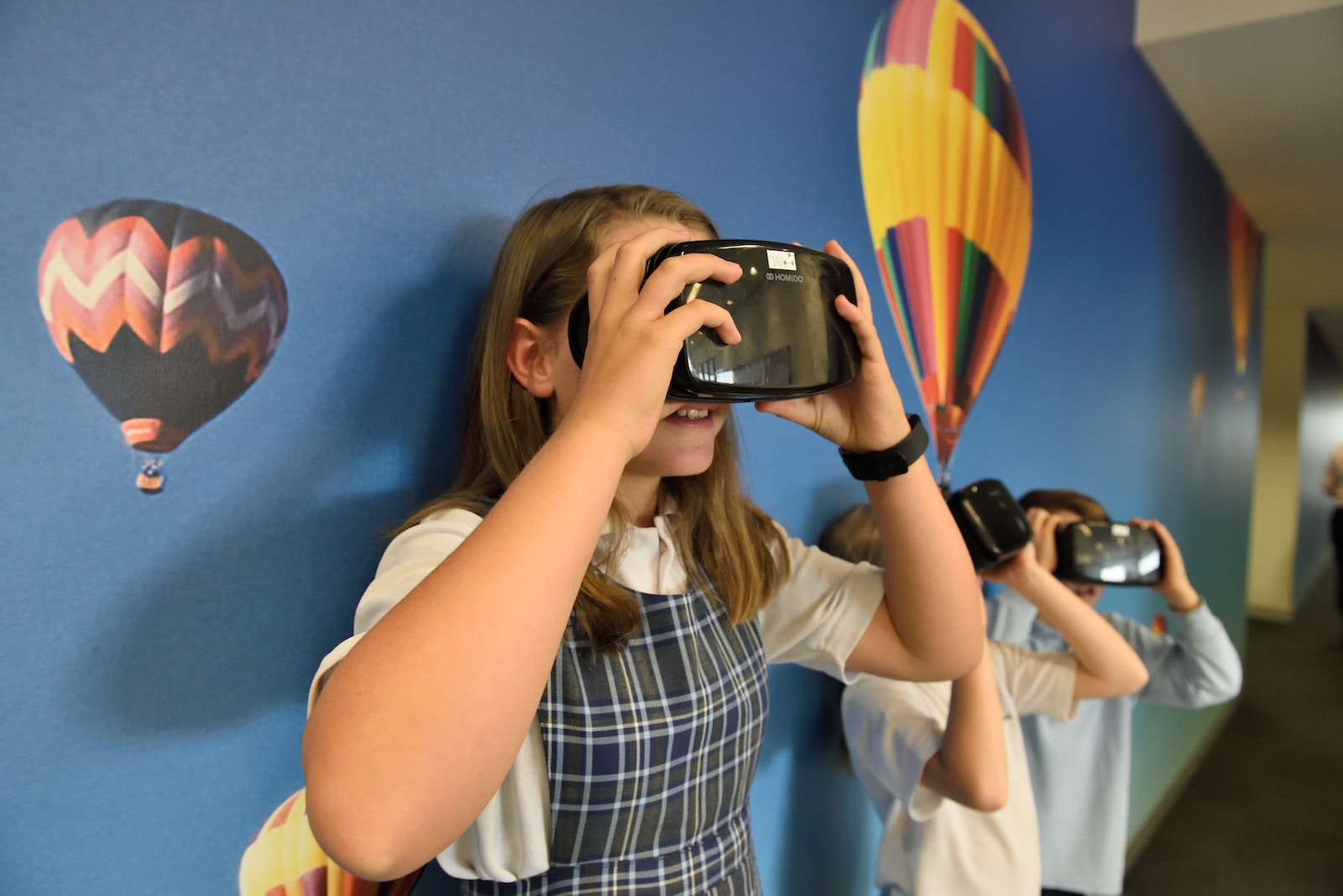Physical Address
304 North Cardinal St.
Dorchester Center, MA 02124

In today’s rapidly changing world, the latest technologies in education are continuously shaping how we teach and learn. Virtual reality (VR) is a revolutionary concept that has expanded beyond entertainment and gaming to serve as a powerful teaching tool. Virtual reality has drastically changed how people study in classrooms today by providing students access to realistic and enjoyable learning settings. In this blog post, we’ll look at the use of virtual reality in schools and how it raises the bar on learning.
From the comfort of your classroom, picture yourself traveling through the human circulatory system to learn about the intricate workings of the human body or stepping back in time to ancient Rome to behold the magnificence of the Colosseum. VR provides education with this degree of immersion. With a virtual reality headset, students can visit locations and experiences previously only available in textbooks and their dreams. This immersive learning environment enthralls students and brings complex subjects to life.
Virtual reality technology creates remarkably realistic virtual worlds through accurate motion tracking, spatial audio, and high-quality graphics. Students explore these immersive settings using various senses, enhancing retention and learning effectiveness.
Student involvement has long been a significant concern in education. Particularly in the current digital era, maintaining students’ motivation and enthusiasm for learning can be difficult. VR excels in this situation. Students are engaged on a whole new level by VR experiences because they are interactive. Rather than receiving knowledge passively, individuals actively engage in learning.
Imagine a biology class where the topic of study is the internal mechanisms of cells. They might be given lectures and graphics in a traditional environment, which might be challenging to understand and abstract even though they are informative. Conversely, VR enables pupils to enlarge the size of a cell and investigate its composition and operations in three dimensions. In addition to improving comprehension, this practical approach piques students’ interest and ignites their passion for the subject.
The potential of VR in education to reduce social and geographic divides is another critical benefit. The latest technologies in education aim to enable learning for everyone, regardless of geography or socioeconomic status. Through virtual reality (VR), kids from underserved or rural places can access the same top-notch educational opportunities as their more fortunate peers.
Consider a situation where financial limitations prevent a tiny rural school from having a chemistry lab. This school’s pupils can still participate in virtual chemistry experiments that resemble actual lab experiences thanks to virtual reality. This leveling of the playing field may help children from different backgrounds feel more empowered and less unequally treated in school.
VR is a crucial component in making personalized learning a reality, an increasingly popular trend in education. Teachers can use virtual reality (VR) to design customized learning experiences for each student. For instance, a history teacher can modify a VR historical simulation’s difficulty level according to a student’s learning style and past knowledge. With the help of this adaptive learning strategy, every student is given the encouragement and challenges they require to succeed.
VR provides insightful data as well. Instructors can monitor how their students engage in online environments to see where they could be falling short or succeeding. Using data, educators can tailor interventions more precisely and modify their pedagogical approaches to better suit the requirements of their pupils.
Virtual reality has many different and extensive uses in education. Here are some instances of VR being utilized to improve education:
Medical Education: By practicing surgeries on simulated patients, medical students can obtain invaluable practical experience without endangering actual patients.
Language Learning: Virtual reality language labs offer an immersive setting where students can rehearse speaking and hearing foreign languages in context.
Science and engineering: Students can conduct experiments in virtual labs that might be too costly or risky in a typical lab setting.
History and Culture: Virtual reality can immerse pupils in many eras and cultural contexts, enhancing their understanding and retention of geography and history teachings.
Environmental Studies: To learn more about our world and the universe, students can take field trips to the Amazon rainforest, the ocean’s depths, or even space.
Virtual reality is one of the latest technologies in education and has a lot of benefits for teaching, but there are drawbacks as well. For some schools and students, the price of VR equipment, which includes high-end headsets and PCs, can be a barrier. Furthermore, time and resources are needed to create excellent VR educational content. Teachers must also receive the appropriate training to incorporate VR into their curricula successfully. Lastly, it’s essential to address worries about the possible drawbacks of prolonged VR use, like motion sickness and eye strain.
Virtual reality (VR) will likely remain a part of education in the future. Virtual reality is at the vanguard of a revolution in education, changing how we teach and learn. Its capacity to deliver individualized, immersive, and captivating learning experiences has the potential to transform education for future generations completely.
To sum up, virtual reality offers a fresh perspective on the latest technologies in education by utilizing the newest technological advancements to produce a more enjoyable, reachable, and efficient learning environment. Even though there are obstacles to be solved, there is no denying VR’s educational advantages. VR is becoming increasingly important in determining the direction of education in the future as technology, instructors, and students all continue to advance. Accepting this technology is essential for preparing kids for the opportunities and difficulties of the twenty-first century, not just an option.